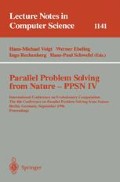Abstract
The fundamental dynamical processes of evolution are connected to processes based on sequences — the genetic messages coded by DNA. In biological evolution we can discover stages of the emergence of novel features. Nature apparently explores some unknown mechanisms of complexification of nets of replicating strings.
It is known that genetic changes are not directly manifested in phenotypic changes. Rather, a complex developmental machinery mediates between genetic information and phenotypic characteristics. It provides a certain robustness by filtering out genetic changes.
Such degree of freedom allows the species to accumulate appropriate mutations without interruption of the development. When the volume of heritable changes achieving critical threshold, this can force out the development to a new higher-level trajectory.
I intend to overview here some findings on the way of searching and exploitation of the rules for evolutionary complexification. I hope these algorithms could find applications in the presentation problem of evolutionary computations.
Preview
Unable to display preview. Download preview PDF.
References
Asselmeyer, T., W.Ebeling amd H.Rose, (1995). Smoothing representation of fitness landscapes — the genotype-phenotype map of evolution, BioSystems.
Daniels SB; Peterson KR; Strausbaugh LD; Kidwell MG; Chovnick A (1990). Evidence for horizontal transmission of the P transposable element between Drosophila species. Genetics 124, 339–55.
Dellaert, F. and R.D. Beer (1994). Toward an evolvable model of development for autonomous agent synthesis. In: Artificial Life IV: Proceedings of the Fourth International Workshop on the Synthesis and Simulation of Living Systems. R. Brooks and P. Maes (Eds.). MIT Press.
Jackle H; Hoch M; Pankratz MJ; Gerwin N; Sauer F; Bronner G. (1992). Transcriptional control by Drosophila gap genes. J Cell Sci Suppl 16, 39–51.
Kaneko, K (1994). Chaos as source of complexity and diversity in evolution, ALife, 1, 163–177.
Kitano, H. (1994). Evolution of Metabolism for Morphogenesis. In: Artificial Life IV: proceedings of the fourth international workshop on the synthesis and simulation of living systems. R. Brooks and P. Maes (Eds.). MIT Press.
Patel NH; Ball EE; Goodman CS (1992). Changing role of even-skipped during the evolution of insect pattern formation. Nature 357: 339–342.
G.P. Wagner and L. Altenberg. (1995). Complex Adaptations and the Evolution of Evolvability. WWW http://peaplant.biology.yale.edu: 8001/papers/CompAdapt/compadapt.html
Wallace, B. (1985). Reflections on the still “hopeful monster”, Quart. Rev. Biol. 60, 31–42.
Author information
Authors and Affiliations
Editor information
Rights and permissions
Copyright information
© 1996 Springer-Verlag Berlin Heidelberg
About this paper
Cite this paper
Spirov, A.V. (1996). Self-assemblage of gene nets in evolution via recruiting of new netters. In: Voigt, HM., Ebeling, W., Rechenberg, I., Schwefel, HP. (eds) Parallel Problem Solving from Nature — PPSN IV. PPSN 1996. Lecture Notes in Computer Science, vol 1141. Springer, Berlin, Heidelberg. https://doi.org/10.1007/3-540-61723-X_973
Download citation
DOI: https://doi.org/10.1007/3-540-61723-X_973
Published:
Publisher Name: Springer, Berlin, Heidelberg
Print ISBN: 978-3-540-61723-5
Online ISBN: 978-3-540-70668-7
eBook Packages: Springer Book Archive

